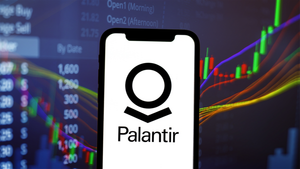
New York, NY – September 29, 2025 – The Artificial Intelligence (AI) and Technology sector has demonstrated unprecedented strength through the second and third quarters of 2025, serving as the undeniable driving force behind robust market performance and soaring investor sentiment. Major indices, particularly the Nasdaq Composite and the S&P 500, have been propelled to record highs, with the S&P 500 surpassing 6,500 points in Q3, largely attributed to the stellar performance of tech giants heavily invested in AI. This powerful comeback, following earlier volatility in 2025, underscores AI's deepening entrenchment as a foundational pillar of future economic growth and technological advancement.
This period of remarkable growth is fueled by escalating demand for AI technologies across various industries and widespread corporate enthusiasm for AI adoption. Enterprises are increasingly leveraging AI for optimized performance, enhanced profitability, and bolstered security, leading to a projected global AI market reaching $244 billion in 2025, a substantial 31% increase over the previous year. The market is witnessing a dynamic shift from speculative enthusiasm to a discerning focus on fundamental strength and tangible returns, even as concerns about overvaluation persist.
A Year of Breakthroughs: 2025 Marks AI's Pivotal Ascent
The year 2025 has proven to be a radical turning point for AI, characterized by rapid advancements, significant investment, and an accelerated pace of enterprise integration. Following a volatile Q1, the AI sector experienced a powerful rebound in Q2 and Q3, with a basket of 38 AI stocks tracked by Morningstar surging 27.3% in Q2 alone. This robust performance is underpinned by a series of key developments and an overwhelming corporate drive to embed AI into core operations.
Throughout 2025, several milestones have underscored AI's growing prominence. In Q1, despite initial market jitters, venture capital (VC) investment saw a record $40 billion AI deal, contributing to a 28% quarter-over-quarter increase in total VC-backed company fundraising. Tech giants like Microsoft (NASDAQ: MSFT) significantly increased their capital expenditures for 2025, allocating $80 billion to expand AI data centers and meet surging demand. OpenAI released advanced models like GPT-4.1 in March and the highly anticipated GPT-5 in August, significantly outperforming predecessors in coding, instruction following, and reasoning capabilities, further solidifying the generative AI revolution. Google Cloud (NASDAQ: GOOGL, GOOG) also introduced new AI agents in August, aiming for an "agent enterprise" and foundational custom AI solutions.
Corporate enthusiasm for AI adoption is at an all-time high, with 78% of organizations reporting AI usage in at least one business function by 2024, up from 55% in 2023. Executives are leading the charge, with 53% regularly using generative AI tools. This widespread integration is driven by tangible benefits: generative AI has boosted productivity by 20-30% for junior employees and 10-15% for senior staff in consulting. Companies like Netflix (NASDAQ: NFLX) are reportedly saving $1 billion annually through AI-powered content recommendations, while Google (NASDAQ: GOOGL, GOOG) attributes 30% of new code to AI, increasing engineering velocity by an estimated 10%. The market's initial reaction has been a mix of exhilaration and cautious optimism, with some startup valuations hinting at an "AI bubble," yet the overall sentiment leans towards a boom underpinned by genuine profit assumptions and heavy infrastructure spending.
Key players like NVIDIA (NASDAQ: NVDA), the undisputed leader in AI hardware, saw its data center segment revenue surge by an astounding 142% year-over-year in fiscal year 2025, briefly touching a $4 trillion market capitalization in July. Microsoft's Azure cloud platform continued its strong growth, with AI contributing significantly to its Q2 2025 performance. Meta Platforms (NASDAQ: META) also reported accelerated revenue growth driven by AI investments in its core advertising engine. Beyond these giants, companies like Palantir Technologies (NYSE: PLTR), IBM (NYSE: IBM), and a host of innovative startups are rapidly deploying specialized AI solutions across various industries, from healthcare to finance, further cementing AI's role as a transformative technology.
Winners and Losers: Navigating the AI Gold Rush
The AI boom is rapidly reshaping the corporate landscape, creating clear winners and posing significant challenges for others. Companies providing the foundational technology for AI, enabling its adoption, or effectively integrating AI into their core offerings are poised for substantial gains.
At the forefront of the winners are AI Infrastructure Providers. Semiconductor giants like NVIDIA (NASDAQ: NVDA) continue to dominate, with their GPUs being indispensable for AI model training and data centers. NVIDIA's new Blackwell platform, up to 2.5 times more powerful than its predecessor, is being acquired by major AI labs and cloud providers, fueling its revenue growth. Broadcom (NASDAQ: AVGO) is also making strides in custom AI accelerators, with its AI revenue soaring 63% year-over-year in Q3 fiscal year 2025. Taiwan Semiconductor Manufacturing Company (NYSE: TSM) remains a critical, foundational player, producing advanced chips for these innovators. Cloud hyperscalers such as Amazon (NASDAQ: AMZN) (via AWS), Microsoft (NASDAQ: MSFT) (via Azure), and Alphabet (NASDAQ: GOOGL, GOOG) (via Google Cloud) are indispensable, providing the compute power and storage for AI deployment, with their cloud divisions reporting significant AI-driven revenue increases. Specialized AI cloud providers like CoreWeave (NASDAQ: CRWV), with its AI-optimized infrastructure, and data center operators like Equinix (NASDAQ: EQIX) and Applied Digital (NASDAQ: APLD) are also direct beneficiaries of the physical build-out of AI infrastructure.
AI Software and Platform Providers are another category of winners. Palantir Technologies (NYSE: PLTR), with its AI platforms for government and enterprise, saw a 110% year-to-date return as of July 2025. IBM (NYSE: IBM) is strategically positioning itself with its watsonx platform, focusing on secure, compliant generative AI services for large corporations, with its AI-based Automation segment growing 14% year-over-year in Q2 2025. Meta Platforms (NASDAQ: META), while known for social media, is deeply investing in AI to enhance ad targeting, user engagement, and develop new capabilities across its platforms. Snowflake (NYSE: SNOW) facilitates AI adoption by providing a robust data foundation and AI-powered analytics, reporting strong Q3 product revenue growth. Companies successfully integrating AI for operational efficiency, such as Duolingo Inc. (NASDAQ: DUOL), which doubled its stock price over the past year due to AI-enhanced language learning, also represent a significant winning segment.
Conversely, the rapid ascent of AI poses significant threats to companies unable to adapt. Companies vulnerable to AI-driven automation and content generation face direct disruption. Wix.com Ltd. (NASDAQ: WIX) and Shutterstock Inc. (NYSE: SSTK) have seen their stocks fall over 33% in 2025 due to fears that AI platforms can generate websites and high-quality images more cheaply and efficiently. Even Adobe Inc. (NASDAQ: ADBE), despite its AI investments, faces headwinds as AI offers cheaper alternatives for creative tasks, with its shares down 23% in 2025. Traditional Advertising Agencies like Omnicom Group Inc. (NYSE: OMC) and WPP Plc (NYSE: WPP) are seeing their core services susceptible to AI automation, leading to significant stock declines. Similarly, Staffing and Consulting Firms such as ManpowerGroup (NYSE: MAN) and Robert Half (NYSE: RHI), and research firms like Gartner Inc. (NYSE: IT), are vulnerable as AI can automate tasks like data analysis, report generation, and candidate screening. Companies with legacy IT infrastructure, poor data quality, or a lack of in-house AI expertise are also slow to adopt or integrate AI, risking market share, efficiency, and talent retention, highlighting the critical need for strategic adaptation in this new AI-driven economy.
A New Global Paradigm: The Wider Significance of AI's Ascendance
The strong performance of the AI/Technology sector and the surging corporate enthusiasm for AI adoption represent more than just a market rally; they signify a profound, structural shift in the global economy and technological landscape. This event is not merely an isolated trend but a foundational re-engineering of enterprise strategy, operations, and even societal structures.
This AI boom fits squarely into broader industry trends, particularly the acceleration of digital transformation across all sectors. AI is no longer confined to the tech sector; it's becoming an indispensable tool for productivity, cost reduction, and innovation in healthcare, finance, manufacturing, and beyond. The shift towards "Agentic AI"—systems capable of autonomous decision-making and action—is a significant emerging trend, promising to redefine workflows and human-computer interaction. This widespread adoption fuels an unprecedented demand for computing power and specialized infrastructure, with global spending on AI infrastructure projected to double by 2027. This also means ripple effects on competitors and partners are immense. Companies that embrace AI effectively gain a significant competitive edge, forcing rivals to accelerate their own AI initiatives, leading to an intensified race for market dominance. This also fosters extensive ecosystem collaborations, with chip companies, hyperscalers, LLM developers, and software firms forming partnerships to meet complex enterprise needs.
The regulatory and policy implications are rapidly evolving. Governments worldwide are grappling with the need to govern AI responsibly. The EU AI Act, the world's first comprehensive legal framework for AI, entered into force in August 2024, with some rules already applicable by August 2025, setting a precedent for risk-based regulation. In the US, states like Illinois and Texas have enacted new AI laws, while the White House Office of Science and Technology Policy (OSTP) is actively seeking public comment on federal statutes that might hinder AI development. This creates a complex global regulatory patchwork, with differing philosophies between the US's deregulated approach and the EU's more prescriptive framework. Ethical concerns, including job displacement, potential for discrimination, misinformation, and cybersecurity risks, are also driving the need for robust AI governance and ethical frameworks.
Historically, the AI revolution draws parallels to transformative shifts like the Industrial Revolution, the internet boom, and the mobile revolution. Like the Industrial Revolution, AI is fundamentally altering labor, but by augmenting cognitive tasks rather than solely mechanizing physical ones. Similar to the internet, AI is built upon existing infrastructure but automates processes, personalizes experiences, and derives insights from vast data at an unprecedented scale and speed. However, the current AI boom is unique in its rapid innovation cycle and the profound cognitive augmentation it offers. While concerns about an "AI bubble" persist, many experts view it as a "boom underpinned by fundamentals," driven by genuine profit assumptions and heavy infrastructure spending, rather than pure speculation. The wider significance lies in AI's potential to become a true general-purpose technology, fundamentally reshaping industries, economies, and societies for decades to come.
The Road Ahead: Navigating AI's Future Landscape
As the AI/Technology sector charges forward, the coming months and years promise a landscape of rapid evolution, demanding strategic agility from companies and presenting both immense opportunities and complex challenges. The current momentum, driven by a projected global AI market reaching $391 billion in 2025 and expected to quintuple by 2030, points to a future where AI is deeply embedded in every facet of business and society.
In the short term (next 1-3 years), we can expect the rise of Agentic AI to define autonomous workflows, with Gartner predicting that 15% of daily business decisions will be made by AI agents by 2028. Mainstream multimodal AI, processing text, images, and audio simultaneously, will enable more accurate and contextual enterprise applications. The democratization of AI development will accelerate through advanced low-code and no-code platforms, empowering business users to create custom AI solutions. Furthermore, a significant shift towards Edge AI deployment will enable real-time decision-making on local devices, enhancing privacy and efficiency. Crucially, increased focus on AI governance, ethics, and security will become paramount, with companies investing heavily in compliance platforms to ensure responsible AI usage.
Looking long term (3+ years), AI is poised to become a "general-purpose technology," driving transformative breakthroughs in fields like biotechnology, robotics, and energy. This will fundamentally reshape existing industries and create entirely new ones. The workforce will continue to evolve, with AI creating new job categories while augmenting existing roles, necessitating continuous upskilling. AI will also play an increasingly vital role in addressing global challenges, from climate change to healthcare. Companies must strategically pivot by shifting from a "model-first" to a "product-first" strategy, prioritizing measurable ROI, and investing heavily in upskilling their workforce. Robust AI governance and seamless integration with legacy systems will be critical. Emerging markets, while facing infrastructural and skill challenges, have the opportunity to leapfrog traditional development stages through AI adoption, provided they can overcome language, cultural, and regulatory barriers.
The future presents a spectrum of potential scenarios. An optimistic transformative future sees AI leading to world-shattering scientific breakthroughs and an autonomous, more prosperous society. A steady progression scenario envisions AI augmenting human capabilities and driving widespread productivity without dramatic shifts. However, a stratified future where AI benefits are unevenly distributed, or a challenging future marked by job displacement, ethical dilemmas, misinformation, and control concerns, also remain possibilities. The actual trajectory will depend heavily on strategic decisions by governments, corporations, and research institutions regarding responsible development, investment in human capital, and equitable access to this powerful technology.
A Transformative Era: Key Takeaways and Investor Outlook
The strong performance of the AI/Technology sector in 2025 marks a pivotal moment, solidifying AI's role as the primary catalyst for economic growth and innovation. The sheer demand for AI infrastructure, coupled with widespread corporate enthusiasm for its adoption, has not only propelled market indices to new heights but also initiated a fundamental transformation across industries. This era is defined by a strategic shift from raw AI model development to practical application and the rise of autonomous "Agentic AI" systems. The lasting impact will be profound, reshaping workforces, fostering new business models, and necessitating the evolution of regulatory frameworks to ensure responsible development.
Assessing the market moving forward, continued robust growth in AI infrastructure investment is expected, albeit with a moderating pace from hyperscalers as enterprises increasingly invest in in-house solutions for inference. The rise of Edge AI and AI-enabled devices, driven by tech giants like Microsoft (NASDAQ: MSFT) and Apple (NASDAQ: AAPL), will further embed AI into daily life and business operations. Companies will increasingly prioritize strategic AI investments for "efficient growth," translating substantial infrastructure outlays into sustainable revenue streams across software development, finance, and other sectors. Global IT spending is projected to grow significantly, with AI as a leading component. However, investors must remain vigilant for potential challenges such as market overheating, narrowing breadth of gains, geopolitical tensions impacting supply chains, escalating cybersecurity threats, and the significant energy consumption demands of AI-driven data centers.
For investors in the coming months, a discerning and strategic approach is paramount. Focus on fundamentals by prioritizing companies with strong financial health, consistent revenue growth, and clear competitive advantages. Identify true AI integrators – businesses deeply entrenched in providing AI infrastructure or those successfully leveraging AI to enhance existing services and create new revenue streams, such as Microsoft (NASDAQ: MSFT) with Copilot and Azure. Monitor key AI segments like semiconductors, data center buildouts, and the increasing adoption of AI in non-tech industries as indicators of long-term economic impact. Diversify and adopt a long-term view to navigate the sector's inherent volatility and capitalize on AI's transformative potential. Finally, stay abreast of risks, including valuation excesses and evolving regulatory landscapes, and pay close attention to upcoming Q4 earnings reports and 2026 guidance, as these will be critical in gauging sustained momentum. As of late September 2025, the AI/Technology sector is navigating a dynamic landscape where the promise of AI continues to drive investment. While enthusiasm is palpable, investors must maintain a cautious eye on potential headwinds and focus on companies with solid fundamentals and clear strategies for leveraging AI effectively to ensure sustained success in this rapidly evolving market.
This content is intended for informational purposes only and is not financial advice.




